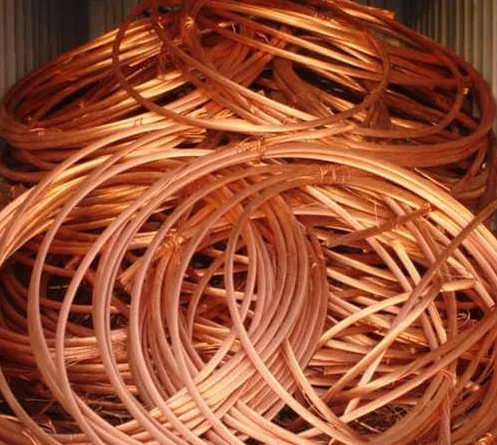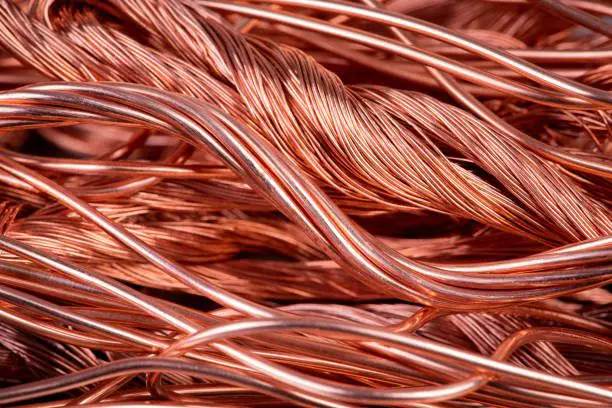In this article we are going to discuss the proper copper waste management process and what proper waste management means briefly. Waste management simply means the collection, transportation, and disposal process of dealing with the removal of human wastes.
Also, waste management can be seen as the process or action required to manage waste until its final disposal.
The waste management process is the treaty of solids and liquid wastes.
Proper waste management practices will lead to the availability of materials that are valuable to revising, reducing, and reusing.
However, recycling your waste is very important to mankind and for the environment at large.
It is known that most human activities generate waste, which automatically leads to a high rate increase and quality of waste generation.
This practice, therefore, makes proper waste management practices one of the most major environmental concerns in the world.
Copper waste according to researchers is iron-rich hazardous waste that usually contains heavy metals like Copper (Cu), Zinc (Zn), Cobalt (Co), and Lead (Pb).
These wastes require some special treatments before they can be disposed off.
The proper and recommended copper waste management alternative is to prevent some kind of waste generation in most cases.
Copper waste prevention is now a basic goal of all waste management strategies.
In most cases, copper waste cannot be outrightly eliminated from a variety of processes.
Different methods can be brought into use to reduce or minimize copper waste generation.
Copper waste minimization now or its source reduction can be achieved through the fabrication of products or services that can minimize the total amount of the resultant waste.
Read Also: Copper Wastes (Scrap Copper) Complete Money Making Guide
Benefits of Proper Copper Wastes (Scrap Copper) Management Process

There are so many benefits that can be realized by copper waste minimization which includes the reduced use of natural resources and also, the reduction of the toxicity of the waste.
This copper waste minimization method is very common in manufacturing applications due to the saving of the materials that are normally used to preserve resources and also saves manufacturing-related costs.
The copper waste management process refers to the recovery of useful materials so that they may be incorporated into the fabrication of recycled copper materials, thereby helping to reduce the required use of raw materials for the identical application.
Copper recycling reduces the need for the natural resource. Exploitation for raw material allows waste materials to be recovered and made use of as valuable resource material.
The recycling of copper waste directly conserves, normally natural resources, reduces energy consumption and emissions generated by the extraction of some virgin material and their subsequent manufacture into finished products.
Taking proper and good measures in ensuring that copper waste management procedures are carried out with regularity helps and makes sure that fewer copper waste materials go to the general waste stream.
Copper waste management reduces a lot of the effect of toxic wastes on the environment and human health.
When it comes to copper waste management practices, it is very important to learn how to gain or have enough knowledge in that regard due to its important impact on our lives and the environment.
Also, there is some little disadvantage when not properly managed, therefore the prevention, avoidance, and reduction of copper waste is a very big important part of waste management as earlier said.
For a recap, copper waste management involves the collection, transportation, recycling, processing, and disposal of copper waste materials that are produced by human activity when in use.
When copper waste is not properly disposed, it can potentially cause irreplaceable damage to the environment and human health i.e if not strategically disposed off.
Read Also: 7 Secrets to Quickly Grow Your Business
Copper waste (scrap copper) can be taken to landfills because burying daily waste in the landfills is one of the most popularly used methods of waste disposal in our world today although not the best proper waste management practice.
This process of waste disposal focuses attention on burying the waste in the land.
Meanwhile, the best approach is by copper recycling into a new product to prevent energy usage and consumption of new raw materials.
Recycling copper waste is also advisable because it reduces the volume of landfills, reduces air and water pollution, reduces greenhouse gas emissions, and also preserves natural resources for future use.
Copper waste can also be incinerated, incineration is the combustion of waste material that is heated to very high temperatures and is then converted or changed into new materials like heat, gas, steam, and ash.
In summary, copper waste management involves the proper handling of copper waste material from the time it is made to its disposal. It includes how companies or businesses collect, transports, process, or dispose its copper waste.
In addition, it is also possible to reverse metal items because, in some countries, there are places or sites where you can bring or sell old materials of coppers or even glasses, which are then recycled and used again.
Have you ever wondered if you could use copper waste products as consumption fuel or for things like heating or cooking?
Then proper copper waste management is a great way to do just that because it recycling process produces energy.
Read Also: How to and Importance of Building a Successful Business Team
Do you have further questions or other contributions? then kindly use the comment section below for all your contributions.
Please also share this article with others you feel can benefit from this information as we cannot reach everyone at the same time. Thank you for sharing!


Learning about how copper can be managed in appliances and prepared for recycling was really helpful. I feel like this is exactly the kind of thing we should try and manage for all of the old devices and appliances we no longer use. If I can find a copper recycling expert in the area, I’ll make sure this is what we do when we prepare our items to send to them.